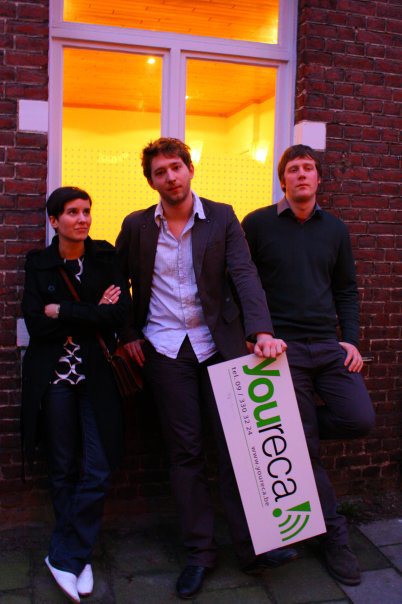
Editor’s note: This is a guest post by Anthony Bosschem, founder and head of Darwin Analytics. It was originally published on his blog. You can contact Anthony on Twitter, where he is @AnthonyBosschem.
Like everyone, I’ve been following ‘My Startup has 30 Days to Live‘. It’s an honest and emotional story about ‘a start-up going south’. One interesting quote was this one:
“Of course, it’s only lying if you don’t believe it’s true right? We set the stage for greatness and then scurry away to make it happen so that the moment someone looks under the hood, they see the gears of technology spinning away and not the emptiness of yet another slide deck.
My first company: about Paul & Frank
The quote got me thinking about the first company I founded. I was 18, took all my savings, and started a ‘webmanaging’ consultancy firm. The firm was one person, me, analyzing web metrics and writing copy for clients.
When I had a sales meeting, I rode my bike to the meeting because I didn’t know how to drive a car. I didn’t park my bike in front of the company building. I rode a few meters further, so people wouldn’t know I had arrived on a bike. (Imagine what they would think!)
Once inside, I had a sales pitch where I constantly referred to my company in plural. When people asked, I told them I had 3 people working inside my company.
One time someone made the bold move to ask me who those 2 other people were. I turned all red and made up two fake names (Paul & Frank) with two fake careers. Obviously, the man who asked knew I was lying.
The problem with faking it: you’re alone with reality
I started to realize that this huge gap between the way I presented my company and how it really was, was growing into a problem. Not only because of the practical issues – I once had to ask two friends to come work at my office, because a journalist was coming over for a picture – but also because it made me unhappy.

Every milestone I would reach was insignificant for the outside world. When I hired my first temporary employee, I couldn’t communicate about it. People thought there were already 3 people working here full-time, so why the big fuss about a temp?
I couldn’t share any of the problems I was facing inside my company, because everyone thought I conquered those issues a long time ago. After five years of ‘faking it until you make it’, I decided to close down my one-man shop and go work as an employee.
Paul & Frank in the startup world
After 21 months as an employee, I’m now running a startup. I see a lot of pitches, and I hear a lot of stories about a lot of startups. They all remind me of my Paul & Frank days: Pitching a dream, and hoping by the time the deal has closed, the dream has come to reality.
At these companies, there is a huge gap between the pitch and reality, which is going to turn out as a huge disappointment for most of the people involved.
‘My Startup has 30 Days to Live‘ is a great example of this pitch vs reality gap. I believe a lot of the authors’ problems would be easier to bear if that gap would have been smaller.
Why I turned to radical transparency
At Darwin, I tried to learn from my previous mistakes, and took a different approach: Radical transparency. We communicate about our hopes & dreams, but we’re also brutally honest about where we are *right now*. Even before deals are closed, we share what is planned and what is really there.
When we sold our first licenses without having a product, those customers *knew* there was no working product. They *knew* there were only wireframes, or just a manual version of the product.
This approach helped me an awful lot in building our company. I can have honest, open conversations with anyone in the start-up world. I have no problem sharing our real revenue with interested VC’s. All employees and clients know how much runway we have left. There even is a live counter to see how the runway is evolving.
Because of this radical transparency, I can share every milestone and every problem. I can blog openly about what is going on, and the feedback I get motivates me to push through when times are though.
And the best thing for someone as lazy as me: it makes life a hell of lot easier. It frees up mental bandwidth not having to juggle with different stories.
A healthier startup ecosystem starts with your pitch
I believe radical transparency can have a very positive impact on the start-up ecosystem as a whole, and on the people working inside startups.
It all starts with your pitch. Add a chunk of truth to that dream of yours, and you’ll have a bigger chance on making it come true.
Header image credit: Thinkstock
Get the TNW newsletter
Get the most important tech news in your inbox each week.




